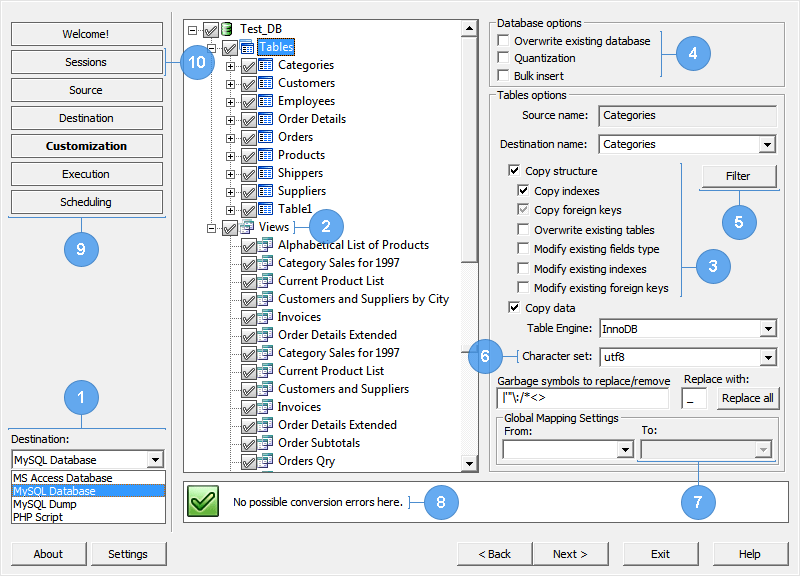 oracle
oracle
MySQL to Oracle converter and synchronization tool are intended for migration and replication of databases from MySQL Server to a PostgreSQL Server. They use direct connection to source and destination databases without any third party software.
By means of these tools it’s possible to quickly move the whole database or only needed database’s single elements. All elements optionally can be selected or deselected for transformation. Schemas and views conversion can be performed as well.
Using an intuitive Wizard interface, tools walk you through the necessary steps to successfully execute your databases. You can also adapt conversion and synchronization to your needs customizing the copying. For example, you can transfer data directly to a server or to a Dump file to read it later on server. Software supports command line that allow users to automate transferring processes.
It’s inappropriate to compare Oracle to MySQL or to say that one is better than the other. They are absolutely different RDBM. Each of them has its own features and purposes to use. They both have some advantages where users can get benefits.
Oracle is mainly designed and more adaptable for lots of database usage. It offers much functionality for solving complex problems. Oracle is a rapid-development server that allows customers to develop and enhance performance of corporate business applications using SQL and/or PL/SQL.
Applications convert data types between MySQL and Oracle automatically. But you can do it manually with the help of smart mapping feature.
Built-in Scheduler presented as a stage in all our tools will help you to run conversion and synchronization tasks in automatic mode. Besides, Trigger-based database synchronization and three sync types may be used to keep your data fully updated.
Two-way database migration in one package. Pay once - get both! Find more information about the reverse migration
